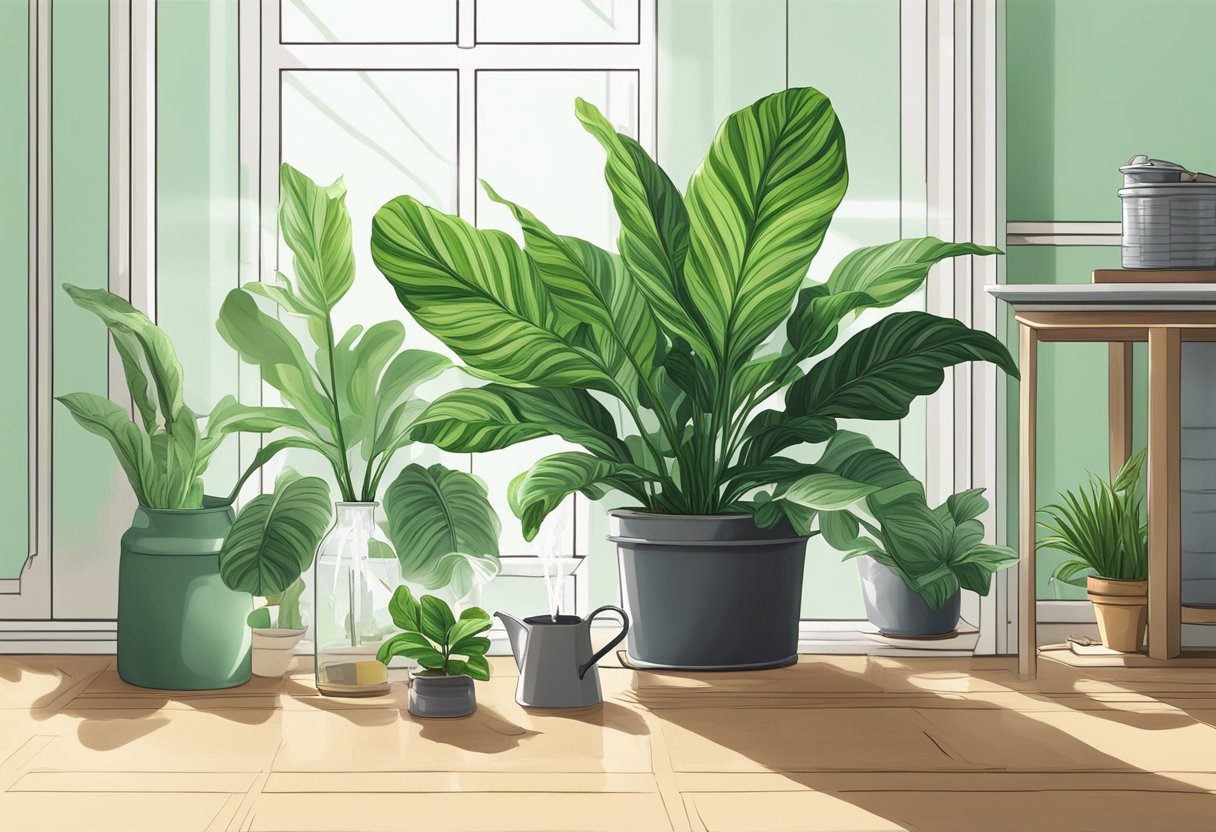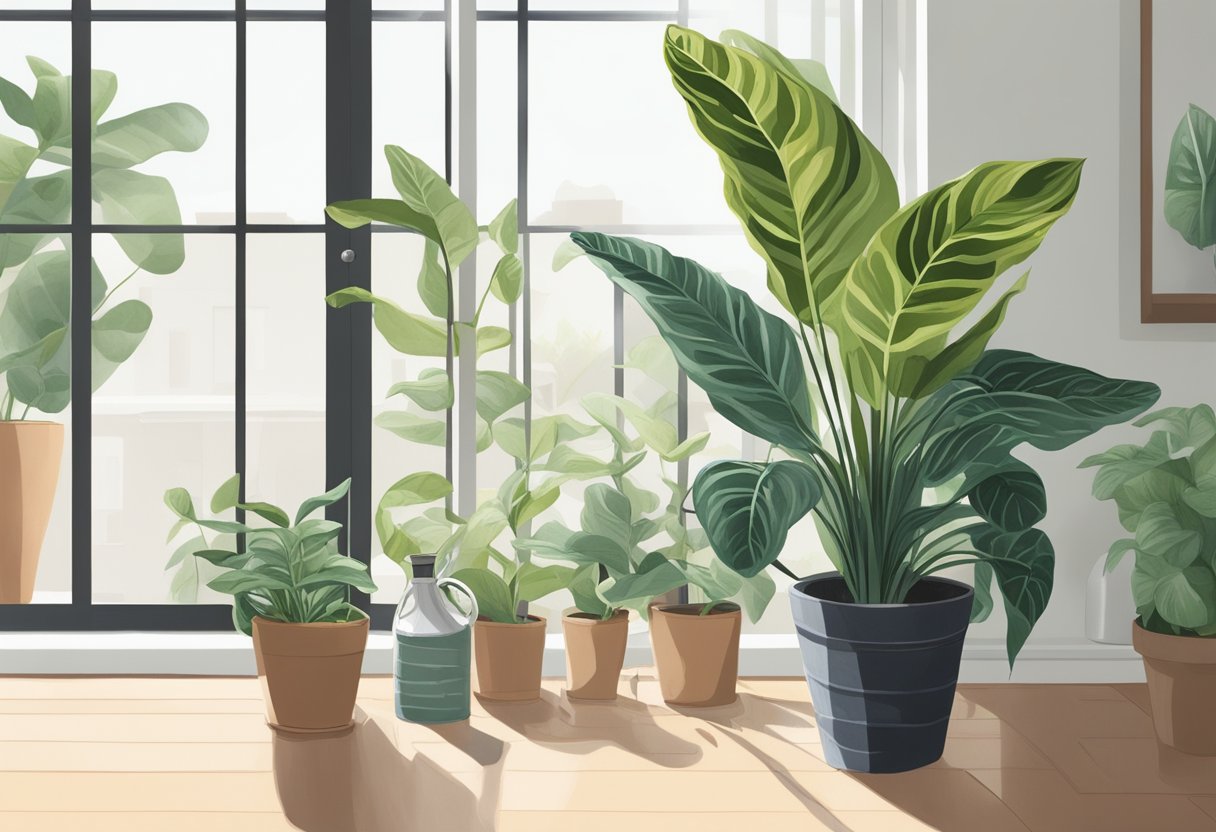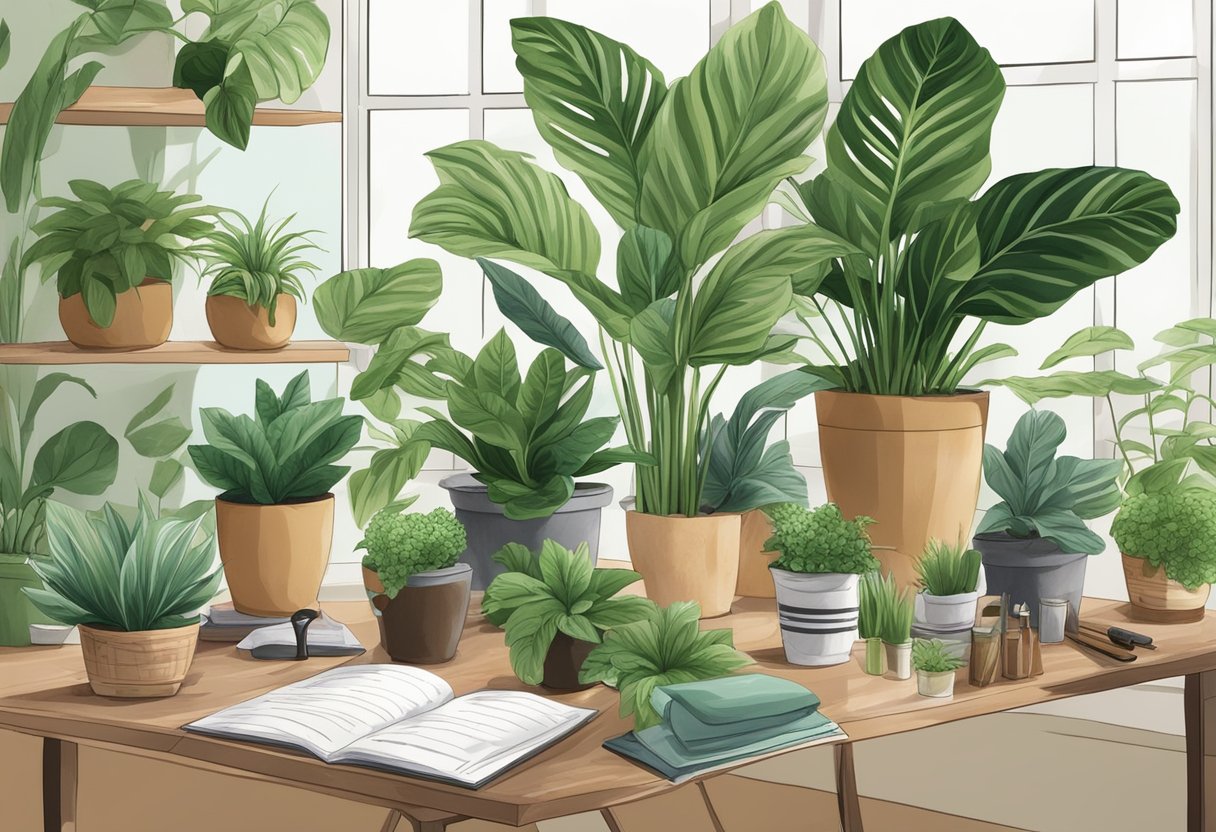How to Care for Calathea: Tips and Tricks for Keeping Your Plant Healthy
Calatheas are beautiful plants that are known for their vibrant foliage and unique patterns. However, caring for calatheas can be a bit tricky, as they require specific conditions to thrive. In this article, we will discuss how to properly care for calatheas, so you can enjoy their beauty for years to come.

First and foremost, it is important to understand the environment that calatheas thrive in. These plants are native to tropical regions, which means they require warm and humid conditions to grow. When growing calatheas indoors, it is important to keep them away from cold drafts and direct sunlight, as both can damage the plant. Additionally, calatheas require consistent moisture, so it is important to keep the soil evenly moist, but not waterlogged.
When it comes to caring for calatheas, there are a few key things to keep in mind. From proper watering techniques to the right amount of light, each element plays a crucial role in ensuring your calathea thrives. In the following sections, we will dive deeper into each aspect of calathea care, so you can become a pro at caring for these beautiful plants.
Understanding Calathea Varieties
Calathea plants are known for their unique foliage patterns and colors, making them a popular choice for indoor gardening. There are many different types of calathea, each with its own distinctive features.
Popular Types and Their Characteristics
The peacock plant, also known as Calathea makoyana, is a popular choice for its unique feather-like patterns in shades of green and purple. The zebra plant, or Calathea zebrina, is another popular variety with bold, striped leaves in shades of green and white. The rattlesnake plant, or Calathea lancifolia, has long, narrow leaves with a distinctive pattern of dark green and light green stripes.
Other popular calathea varieties include the ornata, orbifolia, roseopicta, dottie, and musaica. Each has its own unique features, such as the ornata’s pink stripes, the orbifolia’s large, round leaves, and the roseopicta’s purple undersides.
Distinctive Patterns and Colors
Calathea plants come in a variety of colors, including shades of green, pink, white, purple, and orange. Some varieties, such as the roseopicta, have a combination of colors on the same leaf, while others, such as the musaica, have a mosaic-like pattern of green and white.
It’s important to note that calathea plants can be sensitive to light and water, so it’s important to provide them with the right care to keep them healthy and thriving. With the right care, these unique and beautiful plants can add a touch of exotic beauty to any indoor space.
Optimal Growing Conditions

Calathea plants are known for their stunning foliage and require specific growing conditions to thrive. Here are some optimal growing conditions for Calathea plants.
Light Requirements
Calathea plants thrive in indirect light, making them perfect for indoor growing. They should be placed in a location that receives bright, filtered light. Direct sunlight can scorch the leaves, so it is best to keep them away from windows that receive direct sun. In low light conditions, the plant may become leggy and lose its vibrant color.
Temperature and Humidity
Calathea plants prefer warm and humid environments. They thrive in temperatures between 65-80°F (18-27°C). A humidifier or a pebble tray can help maintain the required humidity level. The ideal humidity level for Calathea plants is around 60%. If the air is too dry, the leaves may turn brown and crispy.
Soil and Potting Needs
Calathea plants require well-drained soil that is kept moist but not waterlogged. The soil should be a well-draining mix that contains perlite or vermiculite to improve drainage. The pH of the soil should be slightly acidic, between 6.0-6.5. It is important to use a pot with drainage holes to prevent water from sitting in the bottom of the pot. Repotting should be done every one to two years, or when the plant outgrows its current pot.
By providing the optimal growing conditions for your Calathea plant, you can ensure it thrives and remains healthy. Remember to keep the soil moist, maintain the humidity level, and provide filtered, indirect light. With the right care, your Calathea plant will continue to impress with its stunning foliage.
Watering and Feeding Your Calathea
Proper Watering Techniques
Calathea plants prefer moist soil, but overwatering can lead to root rot. It is important to allow the top inch of soil to dry out before watering again. This can be determined by sticking your finger into the soil; if it feels dry, it’s time to water.
Choosing the Right Water
Tap water can contain chemicals that are harmful to calathea plants. It is best to use filtered or distilled water to ensure the plant is receiving clean water. Rainwater can also be used, but make sure it is not contaminated by pollutants in the air.
Fertilizing Frequency and Types
Calathea plants require regular fertilizing to thrive. It is recommended to fertilize once a month during the growing season (spring and summer) with a balanced fertilizer. During the dormant season (fall and winter), fertilizing can be reduced to every other month. Over-fertilizing can lead to burnt leaves, so it is important to follow the manufacturer’s instructions and not exceed the recommended amount.
Overall, proper watering and fertilizing are essential for the health of your calathea plant. By following these guidelines, you can ensure your plant stays healthy and vibrant.
Maintaining Plant Health

Calathea is a beautiful and delicate plant that requires proper care to thrive. To maintain its health, it is important to pay attention to its environment and address any issues that arise promptly. This section will cover some common problems that may affect your calathea and how to deal with them.
Dealing with Common Pests
Calathea is susceptible to infestations by mealybugs and spider mites, which can cause yellowing and curling of leaves. To prevent these pests, it is important to keep your plant clean and free of dust. You can also use neem oil, which is a natural insecticide, to treat infestations. Simply mix a few drops of neem oil with water and spray it on the affected leaves.
Preventing and Treating Diseases
Root rot is a common problem that can affect calathea, especially if it is overwatered. To prevent root rot, make sure your plant is not sitting in water and that the soil is well-draining. If you notice yellowing or curling of leaves, it may be a sign of root rot. In this case, you should remove the affected leaves and repot your plant in fresh soil.
Pruning and Cleaning
Regular pruning and cleaning can help keep your calathea healthy and looking its best. Remove any yellow or crispy leaves as soon as you notice them, as they can attract pests and diseases. You can also use a damp cloth to wipe down the leaves and remove any dust or debris. To give your plant a shiny appearance, you can use a leaf shine product, but be careful not to overdo it.
Overall, taking good care of your calathea requires attention to detail and a little bit of effort. By following these tips and addressing any issues promptly, you can help ensure that your plant stays healthy and beautiful for years to come.
Propagation and Repotting

Methods of Propagating Calatheas
Calatheas can be propagated through division or stem cuttings. The best time to propagate calathea plants is during the growing season, which is in the spring or early summer.
Root Division
To propagate through root division, carefully remove the plant from its pot and gently separate the roots. Make sure each division has a good amount of roots and leaves. Plant each division in a pot with fresh potting soil and water thoroughly.
Stem Cuttings
To propagate through stem cuttings, select a healthy stem and cut it just below a node. Remove the lower leaves and dip the cut end in rooting hormone. Plant the cutting in a pot with fresh potting soil and cover it with a plastic bag to create a humid environment. Keep the soil moist and wait for roots to develop.
When and How to Repot
Calathea plants should be repotted every 1-2 years, or when the plant has outgrown its current pot. The best time to repot is during the growing season.
To repot, gently remove the plant from its pot and loosen the roots. Choose a pot that is one size larger than the current pot and fill it with fresh potting soil. Place the plant in the new pot and fill in the gaps with soil. Water thoroughly and let the plant adjust to its new pot.
When repotting, it is important to use a well-draining potting soil to prevent waterlogging and root rot. It is also important to avoid damaging the roots during the repotting process.
Special Considerations for Calathea Care

Calathea plants are native to South America and are a popular choice for houseplants due to their unique foliage and prayer plant-like movements. However, caring for calathea plants can be challenging, and they require specific conditions to thrive. Here are some special considerations to keep in mind when caring for your calathea plant.
Adjusting Care Throughout the Year
Calathea plants are perennials, and their care needs may vary depending on the season. During the growing season, which is typically from spring to fall, calathea plants require more frequent watering and fertilization. In contrast, during the winter months, calathea plants enter a dormant phase, and their watering and fertilization needs decrease.
Selecting the Ideal Location
Calathea plants prefer bright but indirect light. Direct sunlight can scorch their leaves, while too little light can cause their foliage to fade. Bathrooms can be an ideal location for calathea plants due to the high humidity levels. If the air is too dry, calathea plants can develop brown tips on their leaves.
Additional Tips for Thriving Plants
To keep your calathea plant healthy and thriving, consider the following tips:
- Use a well-draining soil mix that is rich in organic matter.
- Water your calathea plant when the top inch of soil feels dry to the touch.
- Feed your calathea plant with a balanced fertilizer every two weeks during the growing season.
- Consider using a pebble tray to increase humidity levels around your calathea plant.
- Avoid placing your calathea plant near drafts or heating vents.
In nurseries, calathea plants are often sold in compost or peat-based soil mixes. When you bring your calathea plant home, consider repotting it into a well-draining soil mix that is rich in organic matter. By following these care tips, you can help your calathea plant thrive and enjoy its unique foliage for years to come.
Frequently Asked Questions

What are the ideal lighting conditions for Calathea plants?
Calathea plants prefer bright, indirect light. Direct sunlight can scorch their leaves while too little light can cause them to droop. It is best to place them near a window that receives bright, filtered light or use artificial lighting to mimic natural light conditions.
How do you properly water different Calathea species?
Calathea plants prefer consistently moist soil, but they do not tolerate waterlogged soil. It is best to water them when the top inch of soil feels dry to the touch. Use room temperature water and avoid getting water on the leaves to prevent fungal growth.
What type of soil mix is best for growing healthy Calathea?
Calathea plants prefer well-draining soil that retains moisture. A mix of peat moss, perlite, and vermiculite is ideal. Avoid using heavy soils or those that retain too much moisture, as this can lead to root rot.
How often should Calathea plants be fertilized, and what type of fertilizer should be used?
Calathea plants benefit from regular fertilization during the growing season (spring and summer). Use a balanced, water-soluble fertilizer every two weeks, following the instructions on the package. Do not fertilize during the dormant season (fall and winter).
What are the common signs of a Calathea plant in distress, and how can you address them?
Common signs of stress in Calathea plants include yellowing or browning leaves, wilting, and curling leaves. These can be caused by overwatering, underwatering, low humidity, or pests. Address the issue by adjusting watering habits, increasing humidity, and treating for pests if necessary.
How can you propagate Calathea plants to grow new ones?
Calathea plants can be propagated through division. Wait until the plant has several healthy stems and leaves, then carefully remove it from its pot. Gently separate the stems and roots, then repot each section in fresh soil. Keep the new plants in a warm, humid environment until they have established roots.

